As some of you may know, we’ve been racing to stop the spread of the ocean’s silent killer, Stony Coral Tissue Loss Disease (SCTLD). We call it “Coral COVID” because once it makes its way to a reef, it kills corals rapidly and spreads with an unprecedented ferocity.
But now, our hard work has been featured in National Geographic and we’re grateful for the opportunity to spread more awareness about this devastating disease impacting waters in Florida, The Bahamas and the Caribbean at large.
To read the National Geographic article and share it with your networks, click here.

About the disease
SCTLD is lethal and catastrophic, propagating via water currents and affecting at least 20 species. Imagine massive colonies of brain, star and pillar corals crumbling into white, algae-covered skeletons. That’s what’s happening, and it’s turning reefs once teaming with life into desolate graveyards.
“Colonies that took hundreds of years to grow can be wiped out in a matter of weeks,” said Dr. Craig Dahlgren, emphasizing the disease’s devastation here in The Bahamas, particularly on reefs around Grand Bahama and New Providence.
“Climate change and the deadly outbreak of SCTLD are a double blow that will put an end to coral reefs in The Bahamas unless we act now,” added Dr. Karlisa Callwood, a marine biologist and the Director of Community Conservation, Education and Action at PIMS. “Stony Coral Tissue Loss Disease is spreading like wildfire and destroying our coral reefs – this is reality and demands urgent attention to save The Bahamas’ primary tourism product.”

How you can help
There are a few things each of us can do to stop the spread of SCTLD, and it begins with education.
1- Learn to identify the disease. That way, if you see the tell-tale signs of white, exposed skeletal patches on corals (especially brain, pillar and star corals), you can report it on our website.
2- If you’re scuba diving in the Caribbean, please disinfect your gear after each dive to prevent the accidental transmission of this disease between reefs. Dunking your gear in a bucket of sodium percarbonate & seawater works well for this. For more detailed information, check out the poster below!
3- Lastly, consider supporting our work by donating. We’re a 501(c)(3) non-profit with a home in The Bahamas and a reach throughout the Caribbean. All donations are tax-deductible.

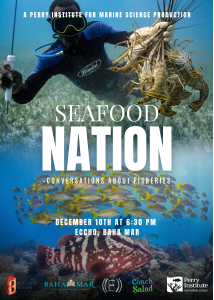
“Seafood Nation” Documentary Premiere Explores the Heart of Bahamian Culture and the Future of Fisheries
NASSAU, The Bahamas | December 5, 2025 – From the bustling stalls of Potter’s Cay to family kitchen tables across the archipelago, seafood is far more than just sustenance in
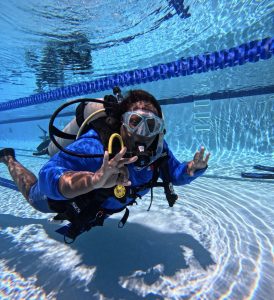
PIMS and Disney Conservation Fund Partner to Train 19 Government Divers
PIMS dive training in Nassau strengthened national coral restoration capacity across government agencies. Bahamas Dive Training Builds National Coral Restoration Capacity Last fall, between the months of September and October,
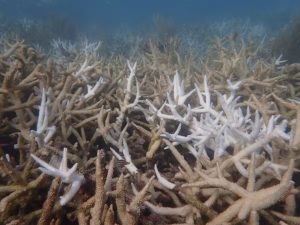
Florida’s Coral Reef Crossed a Line: What Functional Extinction Really Means for Elkhorn and Staghorn Corals
Reefs didn’t just bleach. They functionally vanished in one summer. A new Science study co-authored by researchers from the Perry Institute for Marine Science (PIMS) has found that Florida’s two
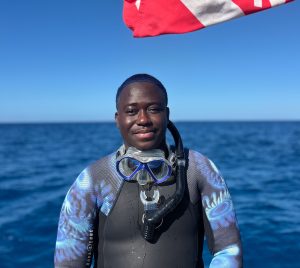
Q&A: Understanding the IDC Course at PIMS with Duran Mitchell
A former aquarist turned coral conservationist, Duran is passionate about understanding how all marine life connects. PIMS & IDC: Empowering New Dive Instructors for Marine Conservation PIMS & IDC: Empowering
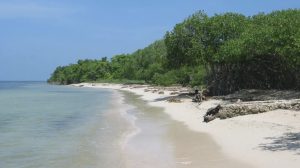
Forbes Shines a Spotlight on Coral Reef Restoration in the Caribbean
When Forbes highlights coral reef restoration, it signals something powerful: the world is paying attention to the urgent fight to protect reefs. And solutions are within reach. Recently, Forbes featured Dr. Valeria
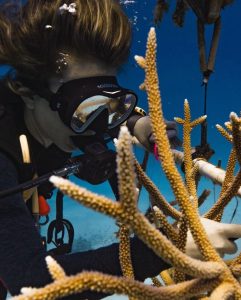
New Reef Rescue Diver Course: Volunteer in Coral Reef Restoration Abroad
Coral reefs are often called the rainforests of the sea—complex ecosystems that shelter a quarter of all marine life, feed millions of people, protect coastlines from storms, and attract travelers

